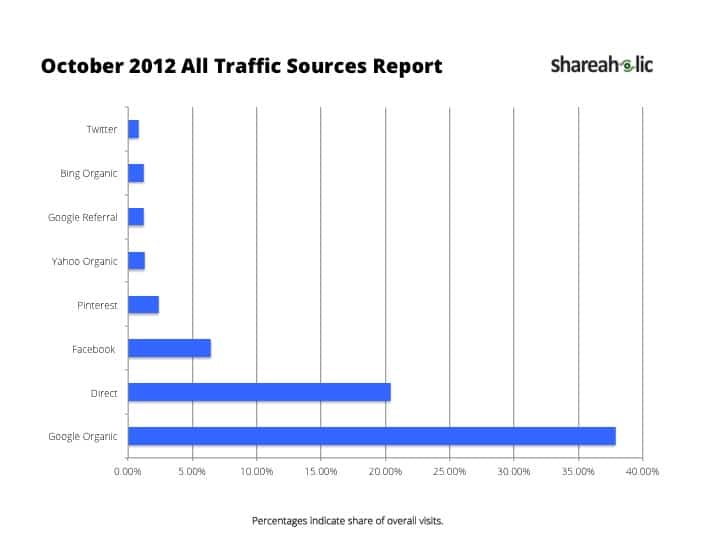Ah, the fickle world of Web traffic. While the big guys like Facebook and Google stay atop the list of important sources for publishers, there’s always a good knife fight going on down on the lower rungs.
Today we’ve got a fresh look at the state of play from Shareaholic, the Cambridge, MA, startup that provides software for sharing and discovering Web content.
In its monthly study of Web traffic flowing to its network of about 200,000 publishers, Shareaholic notes a continued slide for former Web darling StumbleUpon and an ongoing high-profile role for relative newcomer Pinterest.
Mixed in with those sites are names like Yahoo (down) and Microsoft’s Bing search (still a minor player). Bumping along the bottom is Twitter, still a very small source of traffic referrals despite its much-hyped potential as a 21st century newsfeed and recent moves to add article summaries, better photo tools, and other multimedia enhancements.
StumbleUpon was once a major source of traffic for publishers—its aggregation and sifting mechanism provided users a semi-addictive way of skipping around the endless repository of content in the various rabbit holes around the Web. But, as often happens, that status as a favorite place for Web content consumers has faded.
By Shareaholic’s tally, the amount of traffic driven to other sites by StumbleUpon has dropped by 53 percent since July.
Accounts differ about why StumbleUpon’s star as a traffic source has faded in recent years. There’s the rise of competitors, including the current show pony of Reddit. StumbleUpon also was taken back from its former corporate overlords and underwent a redesign about a year ago, which may still be affecting its ability to send eyeballs elsewhere.
Or it could be somewhat intentional. As StumbleUpon vice president Marc Leibowitz told the Verge in August, it could be a consequence of StumbleUpon consciously trying to improve its product and get smaller amounts of visitors who are more attentive.
“The amount of traffic that we drive around the web ultimately could continue to go down,” Leibowitz said. “In some ways we don’t actually worry about, ‘are we sending as much total stumble traffic?’ as we do, ‘are users spending a lot of time on the page?’”
Meanwhile, Pinterest is still a star. The Web service gives users a place to grab different bits of content (particularly images) from around the Web, which can be organized into a bulletin-board-like collection. Pinterest famously came out of relative obscurity among the techie sphere, rocketing to prominence last year as more and more people began signing up—and visiting other sites as a result.
 |
Shareaholic’s publisher research ranks Pinterest as the fourth-largest source of Web traffic, behind only Google searches, direct visits, and Facebook. And it’s illustrative what Pinterest has passed to hold onto that spot—Yahoo, the Web 1.0 legend that has been going through a seemingly never-ending series of reinventions and executive shakeups. Yet another project for Marissa Mayer.
But here’s an interesting wrinkle: Shareaholic also says it’s not clear whether Pinterest is a guaranteed driver of people who actually make purchases on e-retailers’ sites:
“E-commerce software company Shopify says that based on data for customer websites, customers coming from Pinterest are 10 percent more likely to make a purchase. Those findings mirror the data from Shareaholic publisher and homegoods e-tailer Wayfair, who also found that shoppers from Pinterest were 10 percent more likely to make a purchase. On the contrary, Zappos found that although site visitors shared more to Pinterest, visitors coming from the site spend less than those coming from Facebook or Twitter.”
